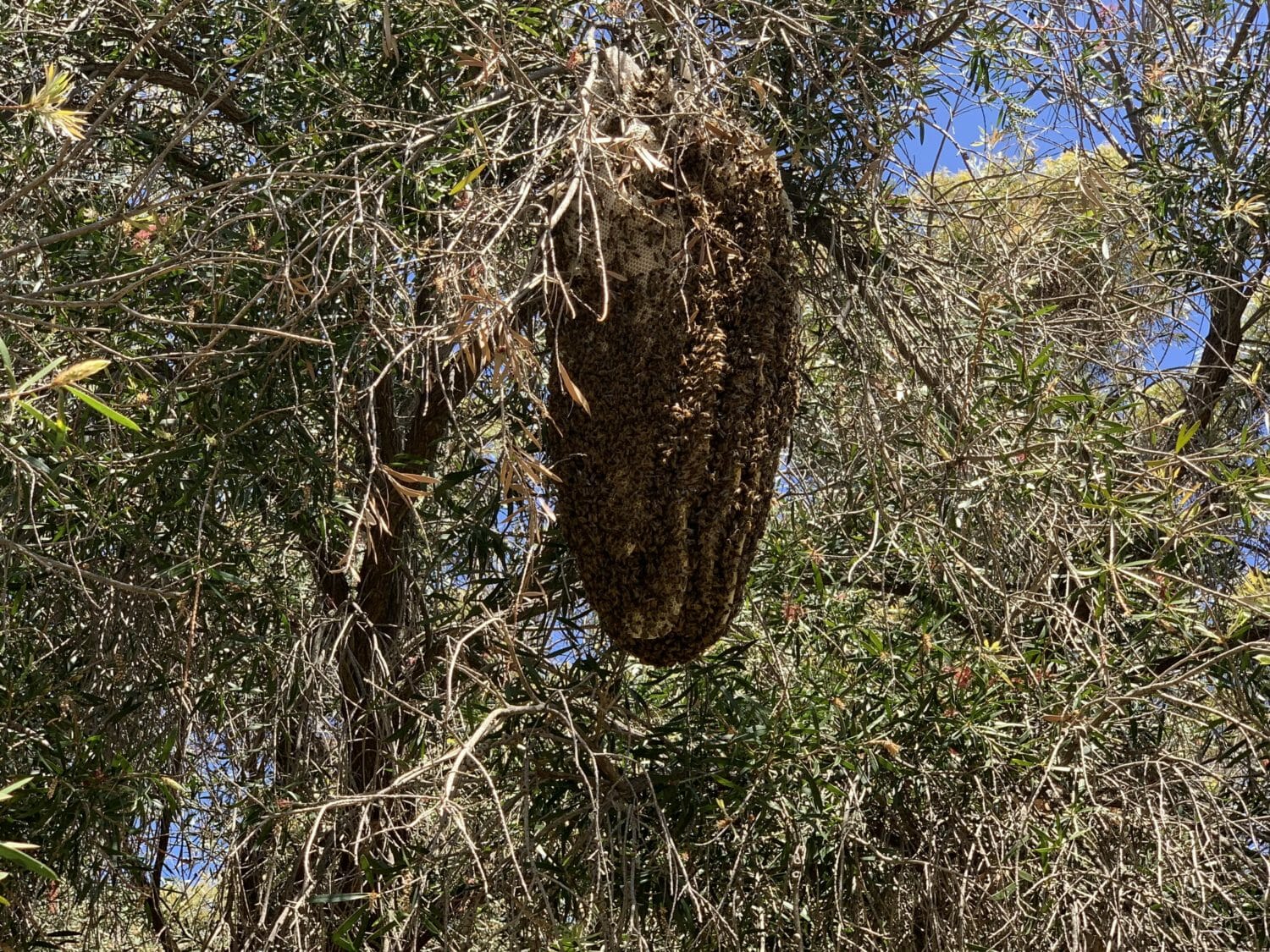Subtotal: $8.10
Aggressive honey bees are often feared. But beekeepers successfully keep such bees all over the world, and there are benefits.
Many people fear being chased down by a swarm of aggressive honey bees. In Australia, however, the three sub-species of European honey bee present are known for their gentleness. Yet at the same time feral bees that descended from these sub-species can at times be more aggressive.
Most beehives consist of hybrids these days, and it’s also not uncommon for beekeepers to re-queen their beehives with highly productive, yet docile, Italian queen bees. Worker bees will generally reflect the temperament of these gentle Queens, which makes a hive that is easier to manage. But there are other factors to consider before writing off more aggressive hives, if you know how to handle them. After all, aggressive bees are just defensive bees.
Take for example the notorious Africanised Bee, aka Killer Bee, which has spread north from Brazil all the way to the Southern USA in the last fifty 60 years. Some US beekeepers have found this “highly aggressive” strain of honey bee to have some advantages. This US beekeeping blog reports that they tend to “begin foraging at a younger age, typically produce more honey, and have a significantly smaller colony size, even though they reproduce at a faster pace”.
These “misunderstood” bees have become the stuff of media sensation and horror movies, and researchers have found that even the history of these bees has been mythologised. The African honey bee was introduced to the eucalyptus forests of São Paulo Brazil by Professor Warwick E. Kerr in 1956. The widely believed story is that a bumbling beekeeper “accidentally released” 26 swarms from an experimental enclosure. But several studies, including those published by Kerr (1967), imply otherwise.
According to University of Tennessee researchers Moore, Wilson and Skinner, Kerr intentionally performed hybridization experiments, reared and artificially inseminated African queens with Italian honey bee drones, and distributed these bees to beekeepers in southern Brazil. His intention was to breed a race of honey bee that would be more adapted to the tropical climate of South America. He described these colonies as “the most prolific, productive, and industrious bees.” But their rapid spread through Brazil and Argentina did not go unnoticed, with reports of “killer bees”, rapidly spreading northward, widely circulated in US media by the mid 1960s.
Moore, Wilson and Skinner explain that the key to understanding the differences in Africanized honey bees and other European sub-species is to recognize that they are in fact very similar, except for having evolved in significantly different habitats.
It would be interesting to know whether aggression in Australian feral bees is linked to climate adaptions or other environmental influences since their introduction 150 years ago. On the other hand, some researchers have correlated a more recent spike in aggression with an explosion in canola farming. And sadly it’s the nesting bird life of South Western Australian Forrests that are under the attack.
Many would like to see feral honey populations wiped out for the sake of our birds and other flora and fauna. But at the same tome a lot of food crops rely on feral bees for pollination. So perhaps we need to grow our managed bee populations for those purposes instead. And feral bees can be rehabilitated for such purposes. This is why we believe that capturing feral swarms to develop into managed hives is a great option.
Here at Bee2Bee, Ian has also found that once-feral hives with higher levels of aggression are also the most productive. He attributes this to their “cranky queens” who are more persistent and demanding of their workers. And none of these bees are anywhere near as reportedly problematic or dangerous as Africanised bees, which many beekeepers in the Americas successfully work with.
At the same time a more docile hive will suit the needs of the backyard beekeeper who just wants a bit of honey for their home, family and friends, particularly if you’re a beginner. And if you do want to re-home feral bees into a backyard beehive, this is still a manageable and rewarding option. Either way, make sure you seek the knowledge and support of an experienced beekeeper!
Related:
European Honey Bee Sub-Species in Australia.
An Apiarist in Training: Learning How to Re-home a Beehive
Beehive Removal and Relocation from Way Up High. One for the Birds!

Visit the Bee2Bee online shop for beekeeping equipment and supplies.
 Hive Tool Long J Hook - Yellow only
Hive Tool Long J Hook - Yellow only 



